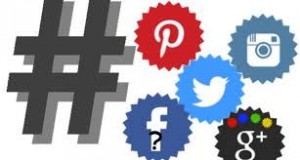You might be familiar with the term “hashtag”, which is now taking the whole social media by storm. This buzzing term was first introduced by Twitter. Following the footsteps of Twitter, now Facebook is also allowing hashtags on their site.
But do you know what exactly a hashtag is?
Take a look here.
A Hashtag (#) comprises of words or phrases devoid of spaces, led by a # sign, for example #SEO that is used to different social media posts and connect them to a topic. Topics are sometimes related to a sporting event, a TV show, a latest happening or a trend of your preference. Apart from Twitter, the originator of hashtags, there is a long list of social media sites leveraging its influence like Facebook, Pinterest, Google+, LikndIn, Instagram, Vine and Tumblr.
By clicking on a hashtag, the particular social network automatically curates as well as displays a feed of other posts and messages incorporating the same hashtag.
Facebook+hashtags:
Hasthags are taking the FB posts by storm as a number of users have started using # in their posts. Hashtags on friends-only posts will be visible only to your chosen audience, while the hashtags on business profiles will be public.
What’s the Point of Using Hashtag in Posts?
Well, this latest social media buzz lets you add context to your post and shows that it’s a part of greater discussion. They can be of utmost importance for bringing people on a single platform and connecting them to discuss the same topic.
In order to create a hashtag, just include a # in front of your chosen word or phrase. Ensure you don’t include any spaces. You can place a hashtag either in the beginning or the middle of the post. As an entrepreneur you can use hashtag to make an event more social, boost the visibility, attract audience or explore new ideas for your content strategy.
Don’t for Hashtag:
Don’t abuse it but save it for the time you need it. Don’t include too many hashtags in a single post as it will look spammy and your search results may drop down.
#DontMakeTooLongHashtags:
Laconic, short and sweet hashtags are easy to spell and remember. So don’t make too long hashtag that your audience may find hard to remember. If you want to use it across multiple channels, ponder the restrictions of those social channels. If you want to create a hashtag for an event which seems long, just use abbreviation or acronym instead.
Why to Use Hashtags?
Well, believe it or not, hashtags have become an integral part of social media marketing. About 71 percent of users are using hashtags in their posts. People follow hasthtags to reach t o their brands and audiences. So, it would be a win-win situation if you incorporate this social media buzz in your posts.

